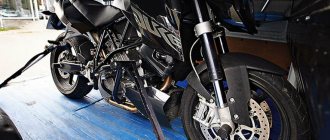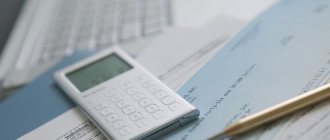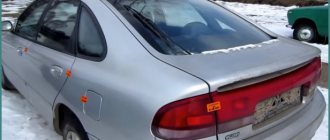Are you planning to buy a car from the States at auction? Don't know where to start shopping? After all, ordering a car from another continent consists of a lot of nuances, and all of them need to be taken into account!
One of the most difficult moments when buying a car from the USA is customs clearance, that is, the process of legalizing a foreign car in the customs territory of Belarus. To ensure the process goes smoothly and without delays, contact AMERICA MOTORS. We have extensive experience working with the American secondary market. We help clients purchase cars from the USA profitably and without unnecessary hassle.
In our catalog you can find cars from the world's leading brands: Toyota, Tesla, Ford, Mercedes-Benz, Chevrolet, BMW, Nissan, Honda, Dodge, Kia, Lexus, etc.
VAT reset
The President of Belarus approved a decree that encourages the use of electric vehicles. Belarus provides some benefits when importing electric cars: some time after import, you will receive a refund of VAT up to 500 b.v. You also have the right to use free parking. If an electric vehicle is brought by an individual, there is a zero VAT rate.
Previously, VAT was calculated on the cost of customs duties and the car, so the benefit when buying an electric car will be up to 38%. Experts predict a rapid increase in the number of imported cars with an electric motor into the CIS, therefore, they will begin to be perceived by motorists in the same way as the conventional cars to which they are so accustomed.
Documents for customs clearance of cars in the Republic of Belarus
To clear a foreign vehicle through customs, an individual must submit the following documents to a customs official:
- a passenger customs declaration completed in two copies;
- documents confirming the information stated in the passenger customs declaration;
- ID card (passport);
- certificate of state registration of the vehicle (original technical passport for the vehicle);
- sales contract or purchase receipt.
It is impossible to clear a car through customs in Belarus using a power of attorney. The personal presence of the owner of the car is required.
Also read: Which crossover to choose aftermarket
Approximate prices for the train.
Experts predict that significant savings threaten future owners of premium electric vehicles, since they initially plan to “increase” the import of inexpensive units and models that have not been involved in an accident or do not need repairs. If we compare the savings in the 2 most popular offers: Nissan Leaf and Tesla, which have been in accidents, then Tesla for 20,000 USD. will cost $7,500 cheaper, and the first option will reduce its cost by only 2 thousand from 5 to 3 thousand.
It is also planned to increase the number of car wreckers specializing in electric cars, as well as car services involved in the repair of electric vehicles imported from American insurance auctions, as well as after accidents and ordinary “everyday” repairs.
Costs for customs clearance of vehicles in Belarus
The cost of customs clearance of a car in Belarus consists of three points.
1. Customs duty. Based on Appendix 2 to Decree No. 443 of the President of the Republic of Belarus dated July 13, 2006, the cost of customs duty is 120 Belarusian rubles.
2. Disposal fee. The recycling fee rates are determined by Resolution of the Council of Ministers of the Republic of Belarus dated November 16, 2021 No. 647. For individuals they are:
- for a car (including with a hybrid power plant) not older than 3 years – 544.5 rubles;
- for a car (including with a hybrid power plant) from 3 to 7 years – 816.7 rubles;
- for a car (including with a hybrid power plant) older than 7 years – 1,225.1 rubles;
- for an electric car up to three years – 544.5 rubles;
- for an electric car from three years and older - 816.7 rubles.
3. Customs duty. The decision of the Board of the Eurasian Economic Commission dated June 30, 2021 No. 74 determines the necessary indicators for determining the final rate.
The final rate is affected by:
- Vehicle age. The countdown is taken from the date of manufacture of the vehicle indicated in the documents confirming the registration of the vehicle in the state of previous registration, or according to the manufacturer’s information encrypted in the VIN code of the vehicle. If only the year of manufacture is determined, then July 1 of the specified year is taken as the exact date of manufacture. In the case where both the year and month are known, but more precise information is not available, the 15th day of the month of manufacture indicated in the documentation.
- Customs value of the vehicle. Determined on the basis of accompanying documents.
- Engine displacement. The information is taken from the vehicle's documentation, which confirms the vehicle's registration in the state of previous registration. If it is impossible to determine the exact engine displacement, the maximum engine displacement set by the manufacturer for machines of a given model is taken as the initial data.
Customs duty rates for individuals are presented in the table.
Please note that the most favorable customs duties are for cars between 3 and 5 years old. Customs duties on them are calculated only based on engine volume. For customs clearance of hybrids, the same rates apply as for cars with internal combustion engines.
Electric vehicles, in accordance with EEC Decision No. 29 of March 16, 2020, are imported into the territory of the EAEU duty-free. This provision is valid until December 31, 2021.
Antique car lovers are also in luck. Vehicles (from any country of origin) manufactured before 1951 are exempt from customs duties. They are no longer vehicles, but cultural assets. This is regulated by the “List of goods for which a permitting procedure for import into the customs territory of the EAEU has been established” dated April 21, 2015.
Also read: Why do Teslas explode and burn? Should we be afraid of them?
What documents are needed for customs clearance?
To successfully complete customs clearance, you must complete all the paperwork. Namely:
- Original technical passport. In America it is called Certificate Of Title;
- Invoice. It is also called Bill OF Sale. Paper confirming the purchase of the vehicle;
- Waybill. Aka Bill Of Landing;
- Client's passport.
The duration of customs clearance is up to 10 days. A competent intermediary will prepare all the documents in advance in order to go through this stage as quickly as possible.
Do you want to receive qualified assistance in customs clearance of a car from the USA? Call AMERICA MOTORS!
Cars from Russia without duties
In Russia, it is most profitable to buy a used car: there is much more choice and more bargaining opportunities. Moreover, on the territory of the Eurasian Economic Union, which includes the Republic of Belarus and the Russian Federation, customs control does not apply. Therefore, if you purchase a car on the territory of the Russian Federation and plan to import it into Belarus, you will not need to pay duty. But only if:
- the car is purchased for personal use;
- the car was made in Russia;
- the car was imported into the territory of the Russian Federation from a country outside the EAEU and has already undergone customs clearance.
But the recycling fee when registering a car from Russia or any other EAEU country will need to be paid. The fee rates are indicated in the previous chapter of the article.
A big advantage of buying a car in Russia is the opportunity to check its history. A large amount of data is shown by the avtocod.ru service. From the full report, you will find out whether the car was involved in an accident, whether repairs were calculated on it, whether it was sold at auctions with total damage, whether the car was wanted or pledged, whether it was used in carsharing and taxis, etc. Information is collected from official sources and is current at the time of verification.
You can identify a car using the VIN and license plate number of the car. The report is generated within two minutes. The cost of one check is 399 rubles.
Let's show it with an example. Let's say we want to buy this Peugeot 308.
We enter the license plate number of the car on the main page of the Autocode website, pay for the check and receive a report in five minutes.
The car is being sold after two owners. The latter drove a car for almost five years.
There are 16 entries in the “Service History at the Dealer and Service Station”. This suggests that the car was being followed.
Among the problems, a road accident with calculation of repair work was displayed. The rear bumper was damaged in the accident.
The repairs cost from 30 to 32 thousand rubles.
Plus there are unpaid fines.
If the owner pays off the fines and gives a discount for the accident, you can buy the car.
Before concluding a contract, check with the seller himself through the car owner verification service. The service will show whether the owner is on the wanted list, whether his passport is valid, etc. View an example report
If the owner has no problems with the law, proceed with the transaction.
Also read: Don't believe it! The most popular myths about buying a used car
Calculation of customs duties
To calculate the customs duty, you can use the car customs clearance calculator in Belarus. There are many such calculators available on the Internet. Enter the initial data: engine size, fuel type, year of manufacture and cost of the car and instantly get the result.
Naturally, we must understand that this is only an approximate figure. The exact cost of customs clearance of a car may vary slightly depending on the actual condition of the car. If the car is broken or damaged, then in this case the minimum catalog value is taken as the estimated value. Tuning, attachments and additional equipment that are not included in the basic factory equipment, on the contrary, increase the estimated cost .
The cost of customs clearance of a car from the USA is practically no different from the cost of customs clearance of European cars.
Also read: Cars from the films “Brother” and “Brother-2”: what happened to them after filming
Purchase and customs clearance of cars from the EAEU: Belarus, Kazakhstan, Armenia and Kyrgyzstan
Purchasing and customs clearance of cars from the EAEU: Belarus, Kazakhstan, Armenia and Kyrgyzstan was previously attractive due to its relatively low price. This was due to the fact that the rules of customs clearance in these countries differed from Russian ones. Many Russian car enthusiasts went to these countries to buy a car, and the flow of imported cars was significant. Now the conditions for customs clearance of cars in the EAEU countries have been brought into line with Russian ones. Now, when importing a car into Russia, you will at least need to pay a recycling fee and connect it to the GLONASS system. The purchased car must be deregistered in the seller’s country, after which the registration and receipt of an electronic PTS (EPTS) takes place at the excise customs of the Russian Federation at the place of registration of the buyer. When importing a car from Armenia or Kyrgyzstan, you will most likely have to pay the difference in underpaid payments, because In these countries, preferential national customs clearance was previously used. This procedure is carried out at the border of entry into the Russian Federation by the individual himself. True, there are exceptions: cars imported into Armenia and Kyrgyzstan at uniform duty rates after 06.2020 are cleared through customs in the Russian Federation without additional customs duties. And in the Republic of Belarus, the year of manufacture of the car, its environmental class and national benefits applied during customs clearance in the Republic of Belarus are not important. To make the purchase profitable, and to make the process of registering a car in the Russian Federation with obtaining an EPTS for subsequent registration with the State Traffic Safety Inspectorate simple, it is better to immediately contact a trusted customs representative who will resolve these issues professionally. Ours is such a customs representative. We will help you quickly and inexpensively import and clear customs cars from the EAEU countries.
Why customers choose AMERICA MOTORS
We have been buying and selling imported cars for 18 years. We know everything about the US secondary car market and help our customers make the most profitable purchase!
We have offices in the largest cities of Belarus and neighboring countries. In Minsk, you can stop by our car showroom and take a test drive of any car in stock.
We provide a turnkey service, helping at all stages of the purchase - not only customs clearance, but also selection, repair and certification of the vehicle.
We will deliver your car to Grodno, Mogilev, Pinsk, Brest, Minsk, Polotsk, Vitebsk or any location you specify.
Customs clearance of imports
Customs clearance of cargo is a mandatory procedure preceding the import or export of cargo outside the customs territory of a country (union of countries). Import customs clearance includes:
- provision of shipping documents to customs
- declaration of imported cargo
- payment of customs duties.
If you use the services of a customs representative, your participation in import customs clearance is limited to the payment of customs duties. Personal presence or the presence of an authorized person will only be required to pick up customs cleared cargo.
Order import customs clearance
To avoid mistakes, fines and unnecessary costs for customs clearance, take a look at the guide we have compiled for you:
- Documents for customs clearance of imports
- Scheme of customs clearance of goods in Belarus
- How to clear customs goods yourself (without a customs representative)
- see also: Customs clearance for individuals on their own - using the example of customs clearance of furniture
- Main mistakes in customs clearance of imports
- How to fill out an import declaration for goods
- Order import customs clearance
Documents for customs clearance of imports
Customs clearance of goods from Europe, the USA and China in Belarus has no fundamental differences, except for the package of documents that the sender transfers with the cargo. Customs clearance of personal belongings has specific features ; more details about this can be found here.
Here is a general list of documents for customs clearance of imports (import of goods), request them from the shipper and give them to us:
- Invoice (invoice) with the name and address of the sender and recipient; cargo delivery conditions; product name, price, article number (ID, REF, SKU, etc.), packaging information
- Packing list
- CMR consignment note (if we do not deliver your cargo)
- Breakdown of commodity items by HS codes in Excel format (affects the cost of the import declaration, see sample breakdown)
- Certificate of origin or its certified copy
- Sanitary and hygienic certificate or a letter stating that the goods are imported for the first time for state hygienic registration (see sample letter)
- Phytosanitary certificate for regulated cargo (see list) or other permits, certificates, conclusions, laboratory reports depending on the category of cargo.
The sender must hand over the original documents along with the cargo, and send electronic copies to us to speed up customs clearance of the cargo when it arrives.
If you are not sure what documents are needed for customs clearance in your case, leave a request and we will provide you with an exact list.
Submit your application
The package of documents for customs clearance differs for imported and exported goods: see Documents for customs clearance of exports.
Scheme of customs clearance of goods in Belarus
If the customs representative handles the clearance, your participation in customs clearance procedures is reduced to a minimum: send the necessary documents, pay customs duties, pay for storage in a warehouse, pick up the cargo.
The scheme for customs clearance of goods with the help of a customs representative is given below. The diagram shows the maximum terms for customs clearance of imported cargo.
Order customs clearance of cargo
How to clear customs goods yourself (without a customs representative)
Independent customs clearance of goods is advisable if you have regular import deliveries, the goods are of the same type and you have time for a personal visit to customs.
If you previously used the services of a customs representative for customs clearance of similar cargo, you can fill out a declaration by analogy (or see How to fill out an import declaration for goods).
To clear customs goods yourself, follow the following procedure:
Main mistakes in customs clearance of imports
The main mistakes when doing independent customs clearance of cargo include:
- incorrect definition of the HS code
- incorrect declaration or violation of customs regime
- lack of necessary permits
- incorrect calculation of customs duties.
Within three years after the declaration and release of goods, customs has the right to conduct post-customs control. Errors identified during post-customs control lead to arrears in customs payments, fines, problems in accounting and tax accounting of supplies, and confiscation of cargo.
These mistakes can be avoided if you first study customs legislation:
If there is no time to study customs legislation, all that remains is to learn from your own experience or order the services of a customs representative.
Order the services of a customs representative
How to fill out an import declaration for goods
| GTD graphs | What to write | What to write | What to write | What to write | What to write | Where to get it from | ||||
| Box 1 Declaration | THEM | customs procedure code | When submitting a declaration in paper form, the field is not filled in | See Classifier of types of customs procedures | ||||||
| Box 2 Sender | Sender's name and address | See transport documents (CMR, air waybill, etc.) Classifier of countries of the world | ||||||||
| Column 3 Col. forms | Declaration page number | Number of declaration pages | – | |||||||
| Column 4 Specifications | The number of specifications, packing lists and other documents that you submit along with the declaration. Separate the fraction with the total number of sheets in the documents | See shipping documents | ||||||||
| Column 5 Total items of goods | Number of items of goods (must correspond to the number of codes in column 31) | See invoice, CMR | ||||||||
| Column 6 Number of places | Number of cargo places. If the cargo is bulk, enter 0 | See transport documents (CMR, air waybill, etc.) | ||||||||
| Box 7 Reference number | Filled out by the inspector | See Classifier of features of customs declaration of goods | ||||||||
| Box 8 Recipient | Name and legal address of the recipient | See your details | ||||||||
| Box 9 Payer | Name and address of the recipient of the goods (in general, the same as the data in columns 8 and 14) | No. UNP | See your details | |||||||
| Box 11 Trading country | Supplier country code | Code of the administrative-territorial unit of the supplier's country. If absent, enter 000 | See Foreign trade agreement Classifier of countries of the world Classifier of administrative-territorial division of countries | |||||||
| Column 12 Total customs value | Total cost of declared goods in BYN (accurate to the kopeck) | Amount of column 45 of the main and additional sheets of the declaration | ||||||||
| Box 14 Declarant | Name and address of the person filing the return | No. UNP | See your details | |||||||
| Box 15 Country of departure | Short country name | Code of the country | Code of administrative-territorial unit. If absent, enter 000 | See Classifier of countries of the world Classifier of administrative-territorial division of countries | ||||||
| Box 16 Country of origin | Brief name of the country. It is allowed to write down, including: “EUROPEAN UNION”, “DIFFERENT”, “UNKNOWN” | See Certificate of origin, invoice, technical. product passport Classifier of countries of the world | ||||||||
| Box 17 Country of destination | Short country name | Code of the country | If previously a declaration was submitted for this batch of goods with customs procedure code 77 or 78 in column 1, then the code of the administrative-territorial unit is indicated. If absent, enter 000 | See Classifier of countries of the world Classifier of administrative-territorial division of countries | ||||||
| Box 18 Vehicle upon departure | Not filled in in Belarus | Not filled in in Belarus | ||||||||
| Box 19 Container | If the goods were transported across the border in a container, 1 is entered. Otherwise - 0 | See transport documents | ||||||||
| Column 20 Terms of delivery | Not filled in | Delivery conditions code and name of geographical location. It is allowed to write “DIFFERENT” | Not filled in | See foreign trade agreement, invoice, CMR Classifier of delivery conditions | ||||||
| Box 21 Vehicle at the border | Not filled in in Belarus | Not filled in in Belarus | ||||||||
| Column 22 Currency and total invoice value of goods | Currency letter code | Amount of column 42 of the main and additional sheets of the declaration | See invoice, invoice Currency classifier | |||||||
| Column 23 Exchange rate | Foreign currency exchange rate to BYN according to the National Bank of the Republic of Belarus on the day of registration of the declaration (in format 1: 1.9892) | See website nbrb.by | ||||||||
| Box 24 Nature of the transaction | Three-digit transaction nature code | Two-digit transaction specific code | Not filled in | See Classifier of the nature of the transaction Classifier of features of a foreign economic transaction | ||||||
| Box 25 Type of transport at the border | Code of the type of vehicle from column 21. When placing goods under the customs procedure for duty-free trade, the column is not filled in | Not filled in | See Classifier of types of transport and transportation of goods | |||||||
| Column 26 Type of transport within the country | >Not filled out in Belarus | Not filled in in Belarus | ||||||||
| Box 29 Customs at the border | Not filled in in Belarus | |||||||||
| Box 30 Customs clearance | Information about the location of the goods at the time of filing the declaration (temporary storage warehouse or other warehouse number, customs control zone number) | See notification of cargo arrival / placement of cargo in warehouse | ||||||||
| Column 31 Packages and description of goods. Marking and quantity – Container numbers – Quantity. and distinctive features | 1) Name of product and manufacturer, trademark, model, article number, grade, etc. Quantity of goods (pieces, pairs, etc.). Year of issue. It is allowed to write: “Goods according to the attached List No. on _ sheets” indicating the total number of goods. 2) Type and number of cargo items 3) Container numbers separated by commas 4) Number of excise stamps 5) If column 20 indicates “MISCELLANEOUS”, then the codes of delivery conditions and the names of geographical locations are listed here through / | See invoice, CMR | ||||||||
| Box 32 Product | Product serial number from column 31 | MPO – for cargo sent by mail, ECG – for express cargo | ||||||||
| Column 33 Product code | Ten-digit HS code. When declaring humanitarian aid, indicate 0000 | I – for intellectual property objects; C – for goods for which customs restrictions exist but are not applied | See EAEU Unified Customs Tariff | |||||||
| Box 34 Country of origin code | Two-digit letter code of the country of origin. If not known, enter 00 | Not filled in | See Classifier of countries of the world | |||||||
| Column 35 Gross weight (kg) | Weight of goods from column 31 accurate to three decimal places | See invoice | ||||||||
| Box 36 Preference | Letter code of benefits and preferences for the payment of customs duties, customs duties, excise taxes, VAT | See Classifier of benefits for payment of customs duties | ||||||||
| Column 37 Procedure (Mode) | Two-digit code of the declared customs procedure (from column 1) and, separated by a space, the two-digit code of the previous customs procedure, if there was one (if there was none, indicate 00) | Three-digit code for the specific movement of declared goods | See Classifier of types of customs procedures Classifier of features of movement of goods | |||||||
| Box 38 Net weight (kg) | Product net weight (without packaging) | See CMR, invoice | ||||||||
| Box 39 Quota | The balance of the allocated quota without taking into account the quantity of declared goods and through the separator / code of the unit of measurement of the goods | See license Classifier of units of measurement | ||||||||
| Box 40 Previous document | Declaration number registered when the goods were placed under the previous customs procedure. The serial number of the product from column 32 of the previous declaration is indicated through the separator /. If a previously declared product is used in the manufacture of a product being declared now, then the weight and quantity of the product included in the new one, as well as the unit of measurement code from column 41 or 31 of the previous declaration, are indicated through the separator / | See previous goods declaration | ||||||||
| Column 41 Additional units of measurement | Quantity of goods from column 31 in an additional unit of measurement, if applicable | Units of measurement classifier | ||||||||
| Column 42 Price of goods (Invoice cost of goods) | The price of the goods in the currency from column 22. If the supply is free of charge, indicate 0 | See foreign trade agreement | ||||||||
| Column 43 MOS code | >Code of the method for determining customs value | See Classifier of methods for determining customs value | ||||||||
| Box 44 Additional information / documents provided | Codes of documents confirming information about the declared goods, indicating the number, date and validity period. If the document was submitted earlier and has not yet lost its validity, then the number of the declaration with which the document was submitted is indicated | See Classifier of types of documents used for customs declaration | ||||||||
| Column 45 Customs value | Customs value in BYN | See invoice, shipping bill breakdown | ||||||||
| Column 46 Statistical cost | Statistical cost of goods in US dollars | See column 42, website nbrb.by | ||||||||
| Column 47 Calculation of customs duties | Customs payment type code | Basis for calculating payment in monetary or natural units | Customs duty rate | Amount of payment | Customs duties payment specific code | See Classifier of types of customs duties Classifier of features of payment of customs duties | ||||
| Column (47)B Counting details | A separate line for each type of customs payment separated by a dash: payment type code – payment amount – digital currency code – payment document number – payment date – payment method | See Classifier of types of customs payments Currency classifier Classifier of methods for paying customs duties | ||||||||
| Box 48 Deferred payments | Payment type code – number and date of the regulatory legal act establishing the deferment – date of payment | |||||||||
| Box 49 Customs warehouse | Registration code of the temporary storage warehouse, customs or free warehouse, duty-free store where the goods will be stored/sold | See Register of owners of temporary storage warehouses, customs warehouses, duty-free shops | ||||||||
| Box 52 The warranty is not valid for | Code for the method of securing payment of customs duties and the amount of security | See Classifier of methods for ensuring payment of customs duties | ||||||||
| Box 53 Place and date | Name of the customs office where customs clearance is carried out | |||||||||
| Box 54 Representative of the declarant | Details of the person who prepared the declaration, signature, date or details of the representative of such person (an employee of the organization indicating the full name, position of the employee, number and date of the power of attorney) | |||||||||
Shipping documents confirming the information specified in the declaration must be kept for 5 years after the release of goods, and inconsistencies in the declaration may not be discovered immediately, but at post-customs control.
Order declarant services to avoid mistakes and speed up customs clearance of cargo:
Order declarant services









